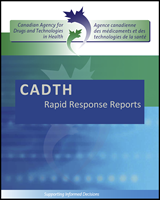Clinical testing is an essential part of the health care process and is utilized primarily to give insight into a patient’s condition. In addition, testing will indicate what choices a physician should make in order to benefit a patient and help to modify their therapy in response to fluctuating disease states. In diabetes diagnosis and monitoring one of the primary tests conducted is a hemoglobin A1c, or HbA1c, test. This is a measure of β-N-(1-deoxy)-fructosyl hemoglobin contained within the red blood cell which is glycated in varying amounts depending on blood glucose levels over time. This protein is found within the red blood cell for its entire life span of approximately 120 days. For diagnosis and monitoring, HbA1c analysis is much easier for a patient to complete than other methods of blood glucose testing as no prolonged period of dietary restriction is required. Additionally, it is completed rapidly, requiring only a sample of blood as opposed to an oral glucose tolerance test which requires a strict diet three days prior to testing and a two hour absorption time after ingestion of a measured amount of glucose. In addition HbA1c testing has no overt requirement from the patient and is not dependent on any sort of prandial status which means that it may be taken at any time day or night. Finally, glucose testing must be sent to the laboratory for measurement within thirty to sixty minutes from the time it was sampled. This is due to the red blood cells continuing to metabolize glucose post-withdrawal at a rate of 7% per hour. The protein analyzed in HbA1c testing is capable of remaining stable for over a week if kept refrigerated.
With the dramatic rise in the prevalence of diabetes comes an associated increase in the amount of HbA1c testing that is required. Current estimates indicate that there is an average annual increase of 8–10% in workload in medical laboratories. In Ontario during 2011 and 2012, the total number of HbA1c tests completed was 3.4 million with an associated cost of $30 million dollars. This is an increase of 55% from 2007–2006 where a total of 2.2 million tests were completed. During the same period 1.4 million HbA1c tests were conducted in non-diabetic patients. It has been estimated that the health related expenditures for patients with diabetes are at least 2.4 times higher than those for non-diabetic patients. This brings to the forefront the need to determine an optimal frequency for HbA1c testing in order to manage both healthcare budgets and productivity.
While published guidelines have described treatment goals and give minimum limits for testing frequency there is a lack of defining criteria for the maximum number of tests or the optimal testing frequency for ideal control. In addition to this problem, previous studies demonstrate that testing is used in patients who do not require it, such as in those who are not diabetic, and those who have had no history of problems with glycemic control. HbA1c testing is typically done twice yearly in well controlled patients and four times yearly in poorly controlled individuals. Studies have shown that both over and under-utilization trends are commonplace in clinical practice. For example it has been found that some individual patients have received a total of 28 HbA1c tests in a single year. The reverse of this has also been found where individual patients are only tested one time in a two year long period.
The purpose of this report is to examine the evidence on the effect of different testing frequencies for HbA1c and discuss the guidelines governing the timing of use.
Disclaimer: The Rapid Response Service is an information service for those involved in planning and providing health care in Canada. Rapid responses are based on a limited literature search and are not comprehensive, systematic reviews. The intent is to provide a list of sources of the best evidence on the topic that CADTH could identify using all reasonable efforts within the time allowed. Rapid responses should be considered along with other types of information and health care considerations. The information included in this response is not intended to replace professional medical advice, nor should it be construed as a recommendation for or against the use of a particular health technology. Readers are also cautioned that a lack of good quality evidence does not necessarily mean a lack of effectiveness particularly in the case of new and emerging health technologies, for which little information can be found, but which may in future prove to be effective. While CADTH has taken care in the preparation of the report to ensure that its contents are accurate, complete and up to date, CADTH does not make any guarantee to that effect. CADTH is not liable for any loss or damages resulting from use of the information in the report.

